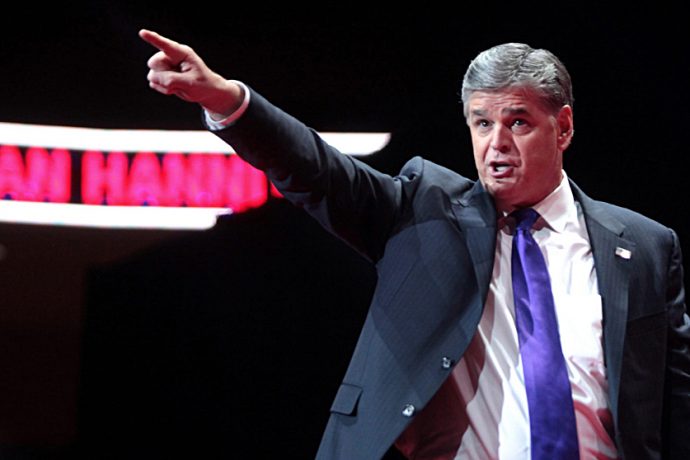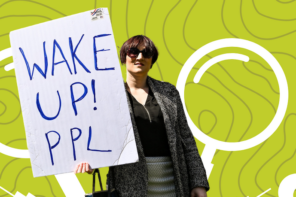Michael Gerson’s recent piece in the Washington Post on the conspiratorial mindset of conservatives in the Trump era argues that conspiracies, such as those about the death of Seth Rich promoted by Sean Hannity, are symptomatic of a legitimized conspiratorial thinking under the Trump administration. The following day MSNBC national correspondent Joy-Ann Reid, wrote an analysis of Gerson’s article, via a Twitter thread.
The only thing I'd debate in Gerson's damning assessment of the state of conservatism is that it started with Trump. https://t.co/70g3SzswMz
— Joy-Ann (Pro-Democracy) Reid 😷 (@JoyAnnReid) May 26, 2017
Reid agrees with Gerson’s conclusion, but argues that the conspiratorial “paranoid style” of the right has been an aspect of the conservative political movement in America for at least a century, astutely pointing to the red scare of 1919, the McCarthy era, and the linking of Communism to the Civil Rights Movement and FDR’s New Deal.
In 1919, after World War I, a series of societal “disasters” led to a resurgence of Americanism and nativism. A brief stock market crash, depression, a widespread fear of a domestic revolt due to unionism, and a rise in the feminist movement, combined with the dramatic increase of immigrants prior to WWI, served to create hostility against minority groups, and a call to stop the moral disintegration of American culture. In response, the era also saw and a surge in radical literature calling for a return to American values, traditional families and roles for men and women. Radicals known as the Hundred Percenters believed that Russians were infiltrating Washington to spread communist ideals to reformers or the lower economic classes.
The battle between Americanism and communism was framed as a battle between good and evil by the radical right but it was also seized upon as an ideological one between progressivism and conservatism. The shifting landscape of unionism and feminism were interpreted as an attack on capitalism and sexual and gender norms. In response, the radical right created a spectre of Bolshevism that was purported to be hidden in the recesses of American institutions, engineering the nation’s moral decline. The Saturday Evening Post, in a November 1919 editorial, stated “History will see our present state of mind as one with that preceding the burning of witches, the children’s crusade, the great tulip craze and other examples of the softening of the world brain.”
Conspiracy theories about communists hiding in the leadership of religious and political institutions also flourished during the McCarthy era, with McCarthy himself having publicly stated in 1951 that Secretaries of State George Marshall and Dean Acheson had conspired to deliver China to the Soviets. He also proclaimed that other American leaders were key characters in a conspiracy against the United States. For those on the radical right, the enemies of America were to be found not only in politics but among the elites of academia.
American society was again facing a series of potential “disasters,” including the fear of a nuclear war, an exceptionally costly arms race, and an ideological battle between communism and capitalist imperialism. Again, the conspiracy was framed as culture war issues via definitions of American morality and values; between atheistic communists and the American Christian (White) Nation. Traditional family roles and values and Christian faith were positioned as an aspect of the ideological armory of America against the atheism attacking it via subversives hidden in every institution.
During the early 1960s anti-communism groups, such as the John Birch Society linked the Civil Rights Movement to communism and the modern version of the Illuminati, “The Insiders,” a global conspiracy of wealthy families and entities with deeply anti-Semitic roots. Founders Robert Welch, Fred Koch, and the JBS promoted the idea that the communists were convincing African Americans to rise up, not because of the systemic lack of equality and violence, but because the communists had “duped” them with promises of financial rewards. In this framing of the movement by the JBS, the Civil Rights Movement and the liberals who supported them were being manipulated to allow martial law to take over America, which would enable the communists to enslave the public.
Conspiracies about progressive movements being controlled by a spectre of evil was a conservative response or rationalization in an attempt to understand the shifting societal changes in America. Conspiracy develops when a group feels marginalized or disenfranchised from the political process; the feeling that your government doesn’t represent you or that you’re unable to affect change in the political process creates a sense of helplessness and haplessness that fosters a feeling of impending disaster. This sensation of disaster allows conspiracy theories to seep into your accepted intellectual response as to why these “disasters” continue to happen.
Reid is correct in her assessment of the historical role of conspiracy in conservatism in America, but both she and Gerson ignore the critical role of a particular interpretation of American Christian Values in the creation of the conservative conspiratorial mindset. In each of the movements noted above the conspiracy undermining the nation was linked to a persecution or the death of God, American Christianity and traditional family roles. Each of these movements was linked to the protection of God, country and family, which was articulated through culture war issues, such as feminism, education, LGBTQ rights, and Civil Rights.
Much of the American right, since the beginning of the 20th century, has been animated by a sense of itself as the definer of “American values” and patriotism. For example, during the anti-communism movements of the late 1950s and early 1960s the Christian anti-communism movements created a voting bloc that believed individuals who had different Christian dogmas were united in their commonly held values against feminism, LGBTQ rights and the “moral decline” of America. This sense of a loss of American values, was linked to communist infiltration in the Church, the National Council of Churches, the government and mainstream media.
The war against mainstream media was met with conservative newsletters and magazines like Human Events and American Opinion, all of which provided the news through a common lens of “American values” and religion. The Moral Majority of the 1970s and 1980s, also used a cohesive conception of Christian values articulated through political policy, regardless of dogma, to mobilize a political bloc. Leaders of the Moral Majority, such as Tim LaHaye and Pat Robertson, both linked the liberal takeover of the American political system to the Illuminati to create a New World Order, and asked Christian voters to stand up to the Illuminati with their votes in support of God, American values and their understanding of the American traditional family.
Writing about the culture wars of the late 1960s and of today religion scholar Stephen Prothero observed that:
In the contemporary culture wars, the maw of cultural politics opened wide and nearly swallowed civil society whole. Culture warriors continued to fight over religion, family, sexuality, race, education, and evolution, but now they fought as well over issues that had previously been considered nonpartisan. As the modus operandi of cultural warfare became the MO of politics writ large, Americans were drawn into a Culture War of Everything, which saw liberals and conservatives taking up sides on the arts, sports and foreign policy.”
Indeed, the myriad stories on opposition to LGBTQ rights framed as a grand appeal to the American value of “religious freedom” reveal that many on the right interpret any movement for change as being controlled by a group seeking the elimination of God, country and family. The movement that helped elect Donald Trump didn’t spontaneously erupt during this election cycle, it’s been active for decades, using a distrust in the mainstream media, a narrow interpretation of Christian and American values, and conspiracy to mobilize. To believe that the paranoid style is a recent development or to ignore the deployment of Christian values within the framework of conspiracy theories does a disservice to those hoping to understand the history of conservatism in the United States.
According to Prothero, the articulation of culture war issues are public disputes that extend past economic issues to religious, moral and cultural concerns. They question the meaning of America, who is or isn’t a “true American,” and they contend that one’s enemies are also the enemies of the nation.





